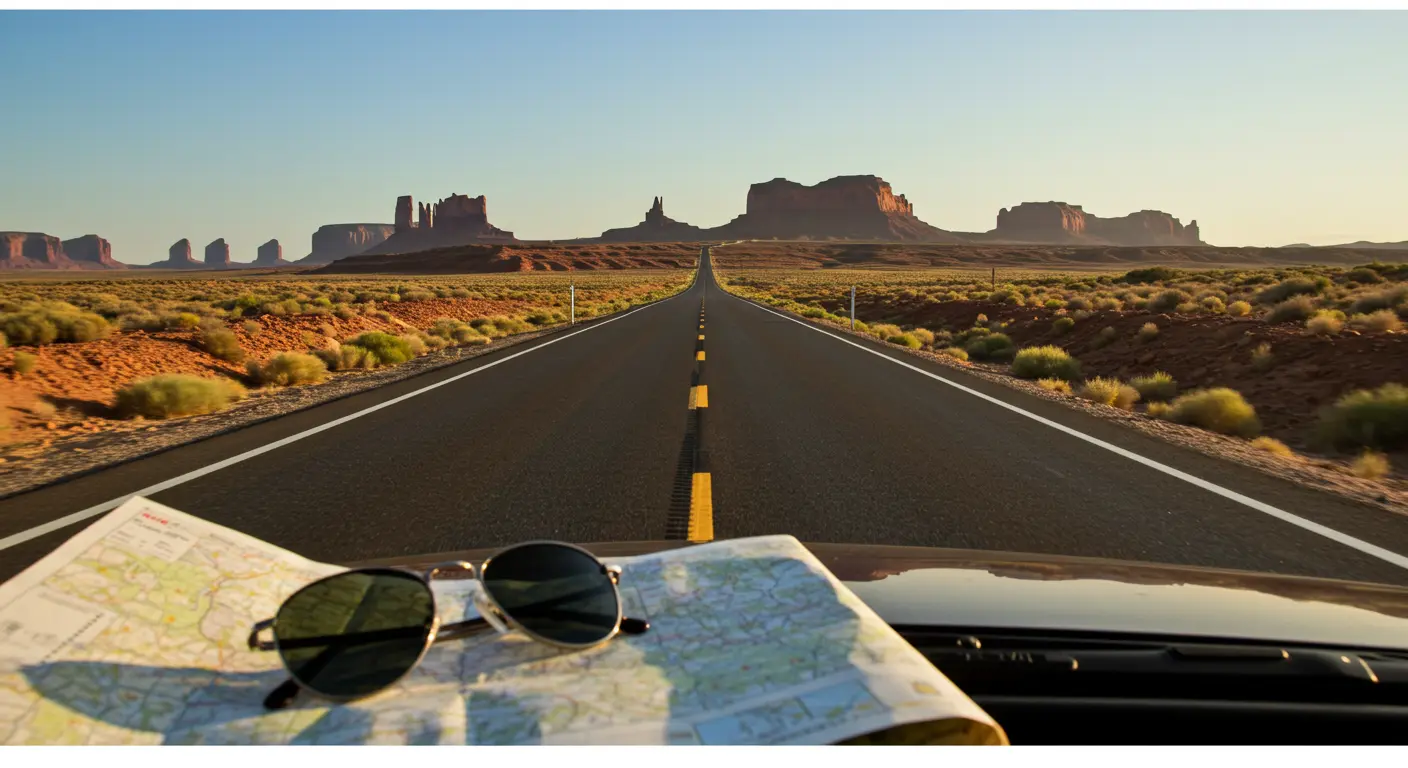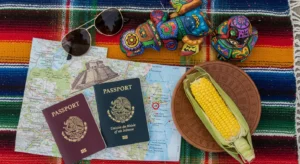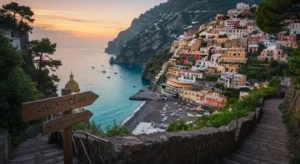Table of Contents
Let’s be honest, planning a trip to the United States can feel downright intimidating. I remember my first time staring at a map of the US—it’s massive! You’ve got two oceans, deserts, mountains, world-class cities, and tiny quirky towns all in one country. Where do you even start? Do you chase the neon lights of Las Vegas, hike the epic trails of a National Park, or stuff yourself with pizza in Chicago?
If your brain is buzzing with more questions than answers, take a deep breath. You’re not alone. Every seasoned traveler was once a beginner staring at a confusing flight search engine.
This guide is designed to cut through the noise. We’re going to walk through the entire process, step-by-step, to transform that overwhelming dream into a clear, actionable plan for an unforgettable United States vacation.
Start Here: The Foundational Stuff You Can’t Ignore
Before you even dream about which swimsuit to pack for California, you need to handle the logistics. Getting these right is what separates a smooth trip from a stressful one.
1. Sorting Your Documents: ESTA & Visa Waiver Program
This is the most critical step. For citizens of over 40 countries (including the UK, Australia, Chile, South Korea, and many in Europe), you can likely travel under the Visa Waiver Program (VWP).
- What it is: It allows you to visit the US for tourism or business for up to 90 days without a visa.
- The Catch: You must obtain an approved ESTA (Electronic System for Travel Authorization) before you board your flight. It’s not a visa, but it’s a mandatory pre-authorization.
- How to Apply: Only use the official U.S. Government website (https://esta.cbp.dhs.gov/). It costs $21 and is usually approved within minutes, though it can take up to 72 hours. Do this weeks in advance, just in case.
- Pro Tip: Your passport must be an e-passport (with the digital chip icon on the cover) and valid for your entire stay. Double-check everything. I once saw a family get turned away at the airport gate because their ESTA was expired—it’s valid for two years, but it’s an easy thing to forget.
If your country isn’t part of the VWP, you’ll need to apply for a tourist visa (B-2) at a U.S. embassy, which is a longer process.
2. Crafting a Realistic Budget
The US can be expensive, but it doesn’t have to break the bank with smart planning. Costs vary wildly by city. A day in New York City will cost significantly more than a day in the Smoky Mountains.
- Flights: Use tools like Google Flights to track prices. Flying into a major hub like New York (JFK), Los Angeles (LAX), or Chicago (ORD) is often cheaper. Consider being flexible with your dates.
- Accommodation: Hotel prices are high in city centers. Look at reputable Airbnb options, or consider staying in suburbs with good public transport links. Hostels are a great budget option in major cities.
- Transport: This is a big one. The US is huge, and outside of major cities, public transport is limited. For any trip covering multiple destinations, you will likely need to rent a car. Factor this cost in early. Domestic flights can be cheap if booked in advance.
- Food & Drink: You can easily spend $50+ per person on a nice dinner. Balance it out by grabbing lunch from food trucks ($10-15) or casual local diners. Don’t forget to budget for sales tax (added at checkout) and tipping (15-20% at sit-down restaurants).
A rough daily budget for a mid-range traveler could be anywhere from $150 – $250 per person, excluding flights and car rental.
Choosing Your Perfect US Adventure: Itinerary Ideas
Now for the fun part! You can’t see it all in one go (trust me, you’ll exhaust yourself trying). It’s better to pick a region and explore it well.
Option 1: The Classic East Coast Blitz
Perfect for history buffs and city lovers.
- New York City (3-4 days): See the Statue of Liberty, walk through Central Park, catch a Broadway show, and feel the energy of Times Square.
- Washington D.C. (2-3 days): Explore the incredible free Smithsonian museums, see the monuments on the National Mall, and feel the weight of history.
- Travel: Take the Amtrak train between these cities—it’s scenic and drops you right in the center of town.
Option 2: The Epic West Coast Road Trip
The ultimate adventure for those who love dramatic scenery.
- Start in San Francisco (2-3 days): Walk the Golden Gate Bridge, explore Alcatraz, and ride a cable car.
- Drive Pacific Coast Highway (PCH) to Los Angeles: This is the highlight. Stop in Monterey, Big Sur, and Santa Barbara. The views are unbelievable.
- Los Angeles (2-3 days): See the Hollywood Walk of Fame, hike to the Griffith Observatory, and hit the beaches.
- Extension: Got more time? Continue to Las Vegas and the Grand Canyon for a complete desert experience.
Option 3: The National Park Grand Tour
For the outdoor enthusiast who wants to see America’s natural wonders.
- Fly into Las Vegas or Salt Lake City: These are great gateways.
- Visit Utah’s “Mighty 5”: Zion, Bryce Canyon, Arches, Canyonlands, and Capitol Reef National Parks. Each offers unique red rock landscapes, hiking, and photography.
- Pro Tip: You’ll need a car for this. Book accommodation well in advance, especially near popular parks, as lodges inside the parks fill up months ahead.
Navigating Like a Pro: Getting Around
I can’t stress this enough: you probably need a car. Renting a car is straightforward. You’ll need your driver’s license, a credit card in the driver’s name, and to be over 25 to avoid young driver fees (though some companies rent to those 21+ with a fee).
- Rules of the Road: Americans drive on the right. Gas is sold by the gallon (it’s cheaper than in most of Europe). Highways have fast speed limits (65-75 mph is common).
- Ridesharing: Uber and Lyft are ubiquitous in cities and are a fantastic alternative to taxis.
- Public Transport: It’s excellent in specific cities like New York, Washington D.C., Chicago, and San Francisco. For most other places, view it as a nice bonus, not your primary mode of transport.
FAQs: Your United States Vacation Questions, Answered
Q: When is the best time to visit the United States?
A: It totally depends on where you’re going! Fall (September-November) is gorgeous almost everywhere, with pleasant temperatures and beautiful foliage. Summer (June-August) is peak season but can be very hot in the south. Winter is great for skiing or desert trips, but harsh in the north and northeast. Spring (March-May) is lovely but can be rainy.
Q: Is it true that tipping is mandatory?
A: For sit-down restaurant service, yes, it’s essentially mandatory. The standard is 15-20% of the pre-tax bill. You also tip bartenders, taxi/Uber drivers, hotel housekeeping, and tour guides. It’s a major part of service workers’ income.
Q: How should I handle money and payments?
A: Credit and debit cards are accepted almost everywhere. You rarely need cash, but it’s wise to carry a small amount for tips, small vendors, or places that have a minimum card purchase. Just make sure to notify your bank of your travel plans first!
Q: Will my phone work, and what about internet?
A: Check with your provider about international roaming plans—they can be expensive. A better option for most travelers is to buy an eSIM data plan online before you go or pick up a cheap prepaid SIM card at the airport upon arrival. Wi-Fi is generally widespread in hotels, cafes, and restaurants.
Q: Is the US safe for tourists?
A: The vast majority of tourist areas in the US are very safe. As with traveling anywhere in the world, practice common sense: be aware of your surroundings, don’t leave valuables in your rental car, and stick to well-lit areas at night. The biggest safety risk for most visitors is likely related to driving or hiking—so follow the rules and be prepared.
Your Adventure Awaits
Planning your first United States vacation is a journey in itself. Remember, it’s not about checking every single landmark off a list. It’s about the experience: the taste of deep-dish pizza in Chicago, the awe of standing on the edge of the Grand Canyon, the hum of energy on a New Orleans street.
Start with your paperwork, set a realistic budget, pick a region that calls to you, and embrace the open road. Do that, and you’re not just taking a trip—you’re crafting a story you’ll tell for the rest of your life.
So, what are you waiting for? That iconic American adventure is out there. All you have to do is take the first step and book it.




